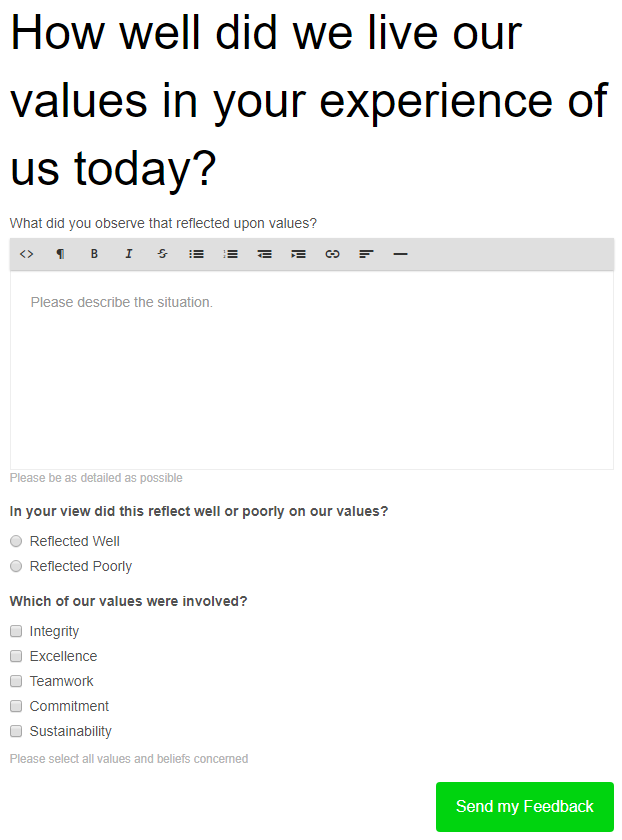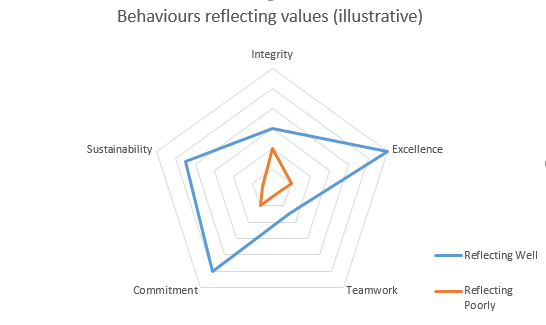 Where diversity doesn't help
Where diversity doesn't help
Diversity is critically important, there is no question about that! Alongside diversity should be inclusion and equity as the trifecta of cultural goals. There is one area though, where diversity doesn't help culture, and that's with regard to core values and beliefs.
Whether they show up as a poster on the wall, the home page of your intranet, or the accepted norms that your tribe lives by, core values and beliefs are the foundation of culture. Straying from them by introducing diverse values and belief systems is going to lead to trouble.
Organisations fail to protect values and beliefs in 3 fundamental ways.
1. They don't place values and beliefs above all else when bringing in new talent (particularly senior leadership)
2. They don't measure behaviour using values and beliefs as a yard stick
3. They use short term incentives that create sufficient motivation to compromise values and beliefs
If people had been true to core values, and if this was measured and reinforced fanatically, would many of the recent corporate scandals have happened?
Wells Fargo
Values: People as a competitive advantage, Ethics, What's right for customers, Diversity and inclusion, Leadership
Scandal: Employees opened more than 2 million unauthorised accounts, hitting customers with $2.5million in fees to meet their sales targets and earn bonuses.
United
Values: We fly right, We fly friendly (Warm and welcoming is who we are), We fly together, We fly above and beyond
Scandal: Forcible removal of passenger to accommodate staff members followed by CEO non-apology, then a $1bn stock price decline
Caterpillar Inc.
Values: Integrity, Excellence, Teamwork, Commitment, Sustainability
Scandal: Raided by federal authorities for serious tax and accounting fraud deemed to be fraudulent rather than negligent
Perrigo Co.
Values: Respect, Integrity, Responsibility
Scandal: Searched by the Department of Justice as part of an investigation into possible price collusion to create an unfair market advantage
Measuring Values
When we proposed using values and value directed behaviour as a possible alternative to performance management (or as well as using goals), some readers were curious how this could be done.
Very simply there are 3 questions to ask to assess the authenticity of values;
1. What noteworthy behaviour did you observe?
2. In your opinion, did this behaviour reflect or compromise values?
3. Which values were involved?
For example, turning this into a feedback template for Caterpillar would look like this,

Note that the same feedback structure can be used for both employee and customer feedback.
Over a short period of time feedback on observed behaviours will show which values are evident, which values are absent, which values are threatened, together with the ability to segment by business unit, geography and so on.

As this illustrative example shows, there would be work to do on teamwork, and integrity which score low relative to other values.
There would be 'point solutions' such as coaching, training, or potential disciplinary action for specific business areas or people who consistently reflect poorly against values.
Once these insights are surfaced, management can choose their best next actions to handle any outlying areas of concern.
Until core values and beliefs are cemented into culture, the diversity, inclusion and equity that organisations and individuals expect will be susceptible to hijacking by rogue workers who can get away with hidden or overt biases.
Great talent will not step up, or join organisations if there is fear of landing in hostile territory through making such a move.
Increasingly review sites such as Glassdoor, Great Place to Work and Indeed call out the gap between stated values and accepted behaviours.
Our view is there should be no gap, and that to remove it requires continual listening and attention to situations that compromise values.
If you want to baseline your actual values against your stated ones, or begin to measure inclusion throughout your organisation, Register and use our templates, or talk to the team at Pay Compliment about the ways we are doing this and the insights we are finding.